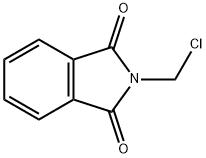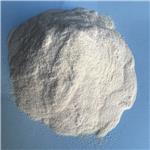N-(Chloromethyl)phthalimide is used as an agrochemical and medicine intermediates and is used in organic synthesis. Microporous membranes prepared from chemically modified polysulfone, which is a derivative of this compound have better streaming potential.
N-(Chloromethyl)phthalimide is a chlorine derivative of Phthalimide. Phthalimide and its derivatives are essential compounds in diverse fields. In pharmaceuticals, they are used as an intermediate material. In the medical field, they are used to synthesize compounds with antimicrobial activity, androgens, and other agents for treating tumor necrosis factor. Certain phthalimide derivatives are used as herbicides and to reduce bacterial contamination. They are widely used in industries to produce pesticides, plastics, resins, and surfactants. The N-substitution of the Phthalimide has a hypsochromic effect on color change and better color yields on poly fabrics because of the electron-donating property of the methyl group and the higher hydrophobicity of Phthalimide. Its chlorine derivative is used as an intermediate for producing medicine, pharmacy, dyes, pesticides, fire retardants, and photocopying chemicals. In particular, N-(bromomethyl)phthalimide and N-(chloromethyl)phthalimide play a vital role in anti-inflammatory, analgesic, and hypolipidimic activities[1].
Purify the imide by recrystallisation from EtOAc or CCl4 or via the 1:1 complex with pyridine [Sakellarios J Am Chem Soc 70 2822 1948, B.hme et al. Chem Ber 92 1258 1959]. [Beilstein 21/10 V 372.]
[1] V. Balachandran , S. Rajeswari, S. Lalitha . “Density functional theory, comparative vibrational spectroscopic studies, NBO, HOMO–LUMO analyses and thermodynamic functions of N-(bromomethyl)phthalimide and N-(chloromethyl)phthalimide.” Spectrochimica Acta Part A: Molecular and Biomolecular Spectroscopy 91 (2012): Pages 146-157.


